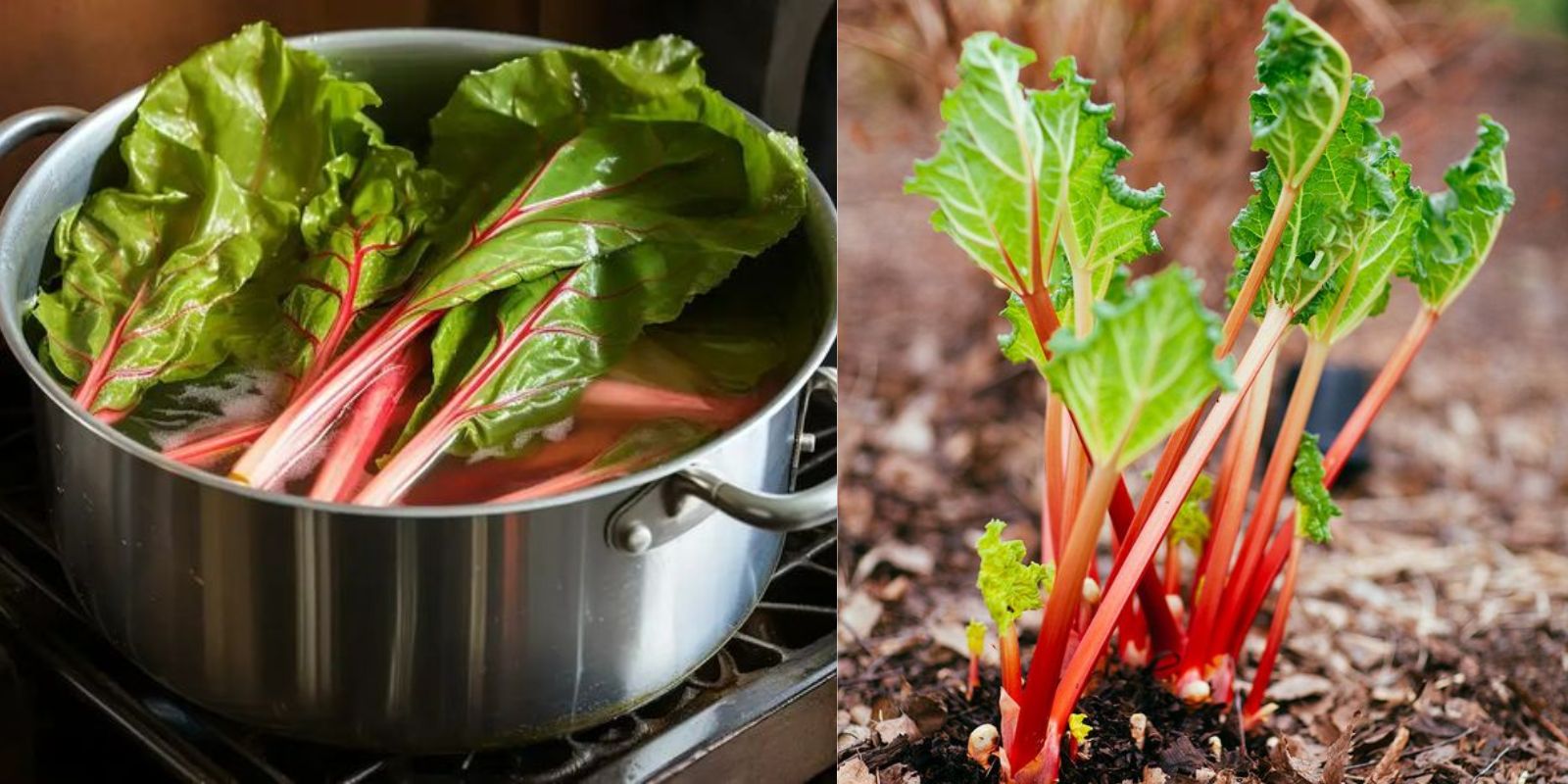Rhubarb is a beloved plant in many gardens, primarily grown for its tangy stalks that are often used in pies, jams, and desserts. However, the large, lush leaves of the rhubarb plant are frequently overlooked and discarded due to their toxicity when ingested. Despite being inedible, rhubarb leaves can be incredibly useful around the home and garden. Here are six clever and practical ways to utilize rhubarb leaves effectively.
Introduction
Rhubarb leaves contain high levels of oxalic acid, which makes them poisonous if consumed. However, this very property lends them various beneficial uses that can help you maintain your garden, enhance your compost, and even clean your home. By finding innovative ways to repurpose rhubarb leaves, you can reduce waste and make the most of your garden’s bounty. Let’s explore six ingenious methods to put these often-discarded leaves to good use.
1. Natural Pest Repellent
Rhubarb leaves can serve as an effective natural pest repellent in your garden. The high oxalic acid content is toxic to many common garden pests but safe for plants when used properly.
Steps to Use Rhubarb Leaves as a Pest Repellent:
- Prepare the Leaves: Collect several large rhubarb leaves and chop them roughly.
- Boil the Leaves: Place the chopped leaves in a pot of water and bring it to a boil. Let it simmer for about 20-30 minutes to extract the compounds.
- Strain the Liquid: Allow the mixture to cool, then strain the liquid into a spray bottle.
- Apply the Spray: Use this homemade pesticide to spray on plants infested with aphids, caterpillars, or other pests. Be sure to test a small area first to ensure the spray doesn’t harm the plants.
This method provides a non-toxic alternative to chemical pesticides, keeping your garden organic and healthy.
2. Weed Killer
The dense, broad leaves of rhubarb can be used as a natural weed killer. By blocking sunlight and preventing photosynthesis, they can effectively suppress weed growth.
Steps to Use Rhubarb Leaves as a Weed Killer:
- Harvest the Leaves: Collect large rhubarb leaves from your garden.
- Cover the Weeds: Place the leaves directly on top of the weeds you want to eliminate.
- Monitor and Replace: Check periodically and replace the leaves as they decompose to maintain effective weed suppression.
This method is especially useful for managing weeds in pathways, garden beds, and other areas where you want to avoid using chemical herbicides.
3. Compost Enhancer
Rhubarb leaves can be a valuable addition to your compost pile, enriching the nutrient content of your compost. Despite their toxicity to humans, the leaves break down harmlessly in compost, contributing essential nutrients.
Steps to Use Rhubarb Leaves as a Compost Enhancer:
- Chop the Leaves: Cut the leaves into smaller pieces to speed up the decomposition process.
- Add to Compost: Mix the chopped leaves into your compost pile, balancing with other green and brown materials.
- Monitor the Compost: Turn the compost regularly to ensure even decomposition and maintain the right moisture levels.
Including rhubarb leaves in your compost helps create rich, nutrient-dense compost that will benefit your garden soil.
4. Cleaning Solution
Rhubarb leaves can also be used as a natural cleaning agent. The oxalic acid in the leaves is effective at polishing and cleaning various surfaces, particularly metal.
Steps to Use Rhubarb Leaves as a Cleaning Solution:
- Rub the Leaves: Take a fresh rhubarb leaf and rub it on the metal surface you wish to clean, such as stainless steel or brass.
- Polish the Surface: Use a soft cloth to buff the surface after rubbing it with the leaf.
- Rinse and Dry: Rinse the cleaned area with water and dry it with a clean cloth.
This method provides an eco-friendly alternative to chemical cleaners, utilizing a natural resource from your garden.
5. DIY Leaf Mold
Leaf mold is a valuable soil conditioner that improves soil structure and water retention. Rhubarb leaves decompose into rich leaf mold that can enhance your garden beds.
Steps to Make Leaf Mold with Rhubarb Leaves:
- Pile the Leaves: Gather rhubarb leaves and create a pile in a shaded area of your garden.
- Keep Moist: Water the pile to keep it consistently moist but not waterlogged.
- Let Decompose: Allow the leaves to decompose over several months, turning the pile occasionally to speed up the process.
- Use the Leaf Mold: Once the leaves have broken down into a dark, crumbly material, use the leaf mold as a mulch or soil amendment.
Leaf mold made from rhubarb leaves is excellent for improving soil health and supporting plant growth.
6. Bird Bath Cleaner
Bird baths can quickly become dirty and algae-filled. Rhubarb leaves can be used to scrub and clean bird baths effectively, thanks to their oxalic acid content.
Steps to Use Rhubarb Leaves as a Bird Bath Cleaner:
- Scrub the Bird Bath: Use fresh rhubarb leaves to scrub the surfaces of your bird bath, focusing on areas with stains or algae.
- Rinse Thoroughly: After scrubbing, rinse the bird bath thoroughly with water to remove any residue.
- Refill with Fresh Water: Fill the bird bath with clean water and enjoy watching the birds return.
This method is a natural way to maintain a clean and inviting bird bath without the need for harsh chemicals.
Engage
Don’t let rhubarb leaves go to waste—discover their surprising uses today! How will you repurpose your rhubarb leaves? Share your creative ideas and gardening tips with us!
Conclusion
Rhubarb leaves, often considered a waste product, can be repurposed in several ingenious ways around the home and garden. From pest control and weed suppression to compost enhancement and cleaning solutions, these versatile leaves offer numerous benefits. By utilizing rhubarb leaves creatively, you not only reduce waste but also enhance your gardening practices and household maintenance in an eco-friendly manner. Embrace these practical uses and turn your garden’s byproducts into valuable resources. Happy gardening!

